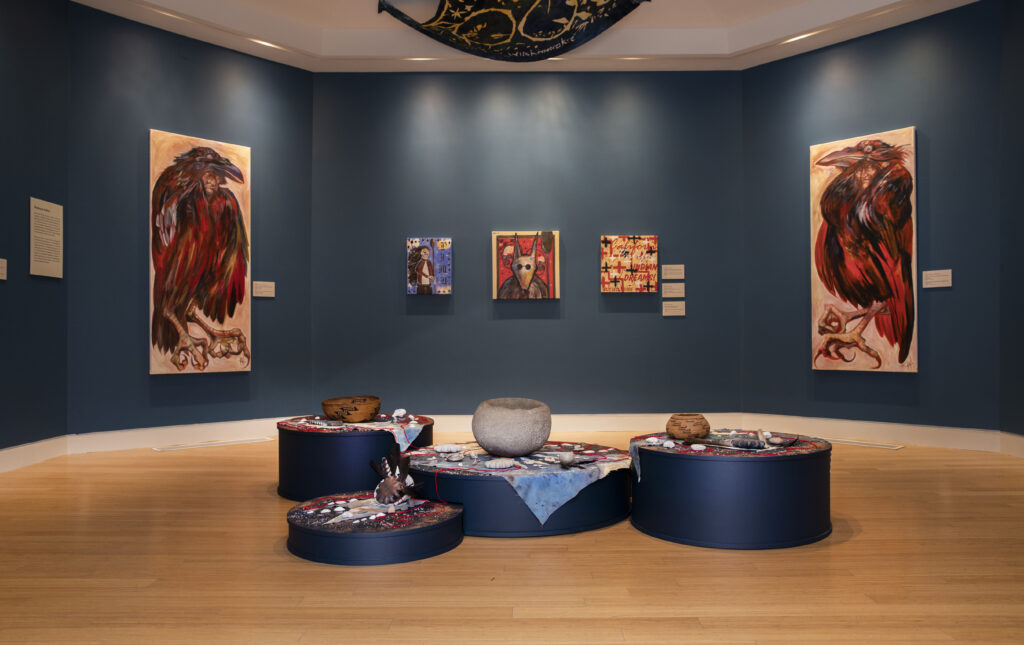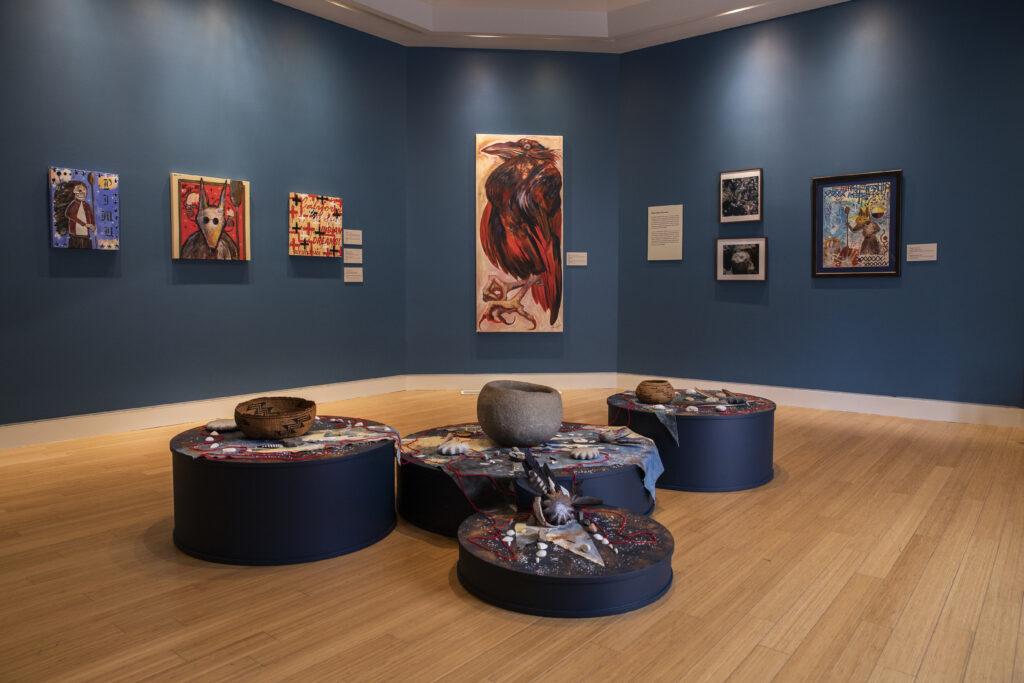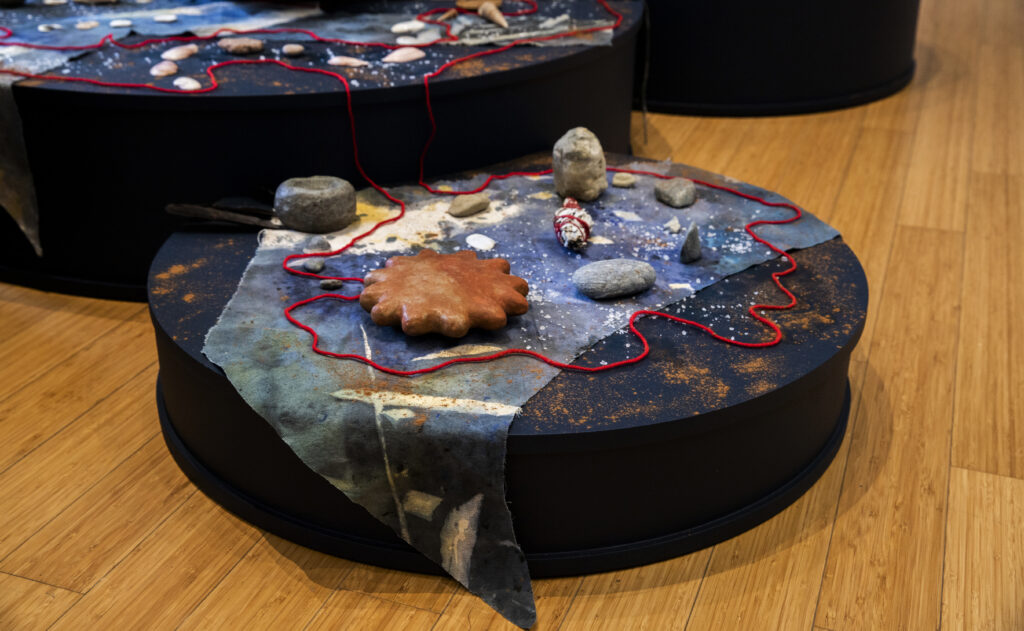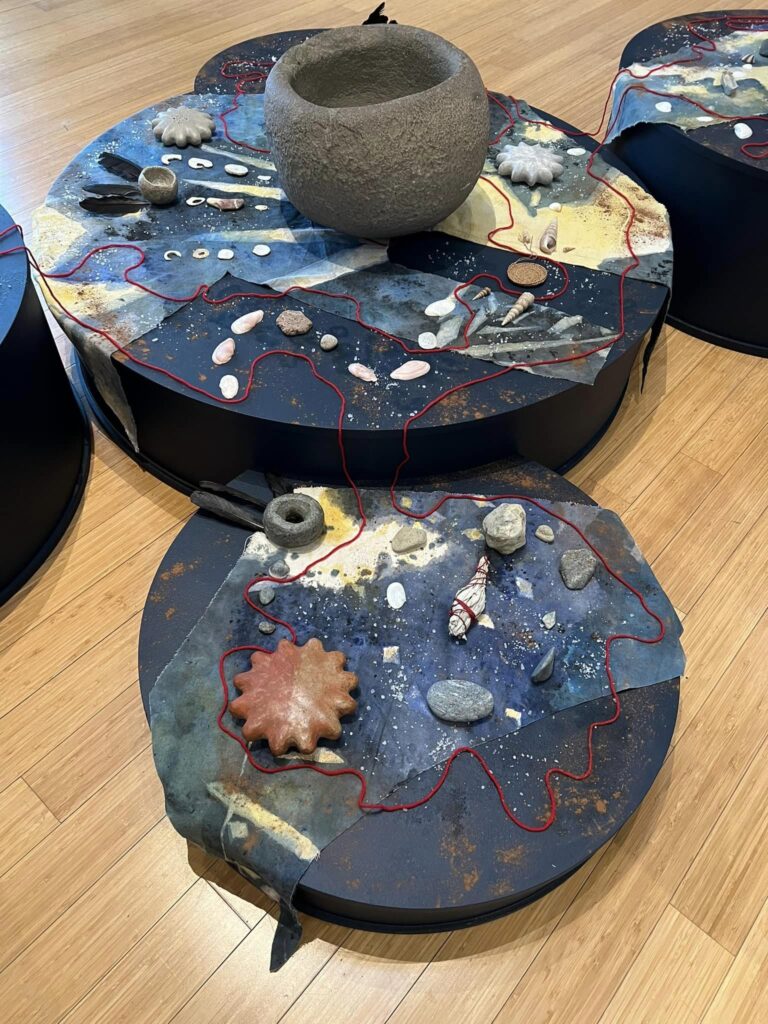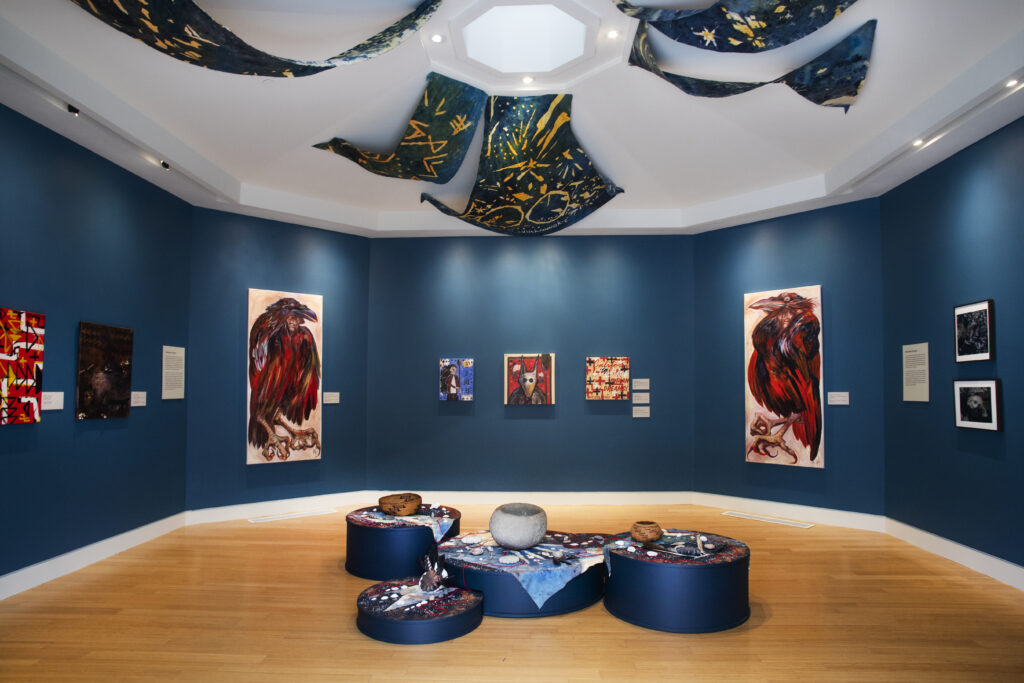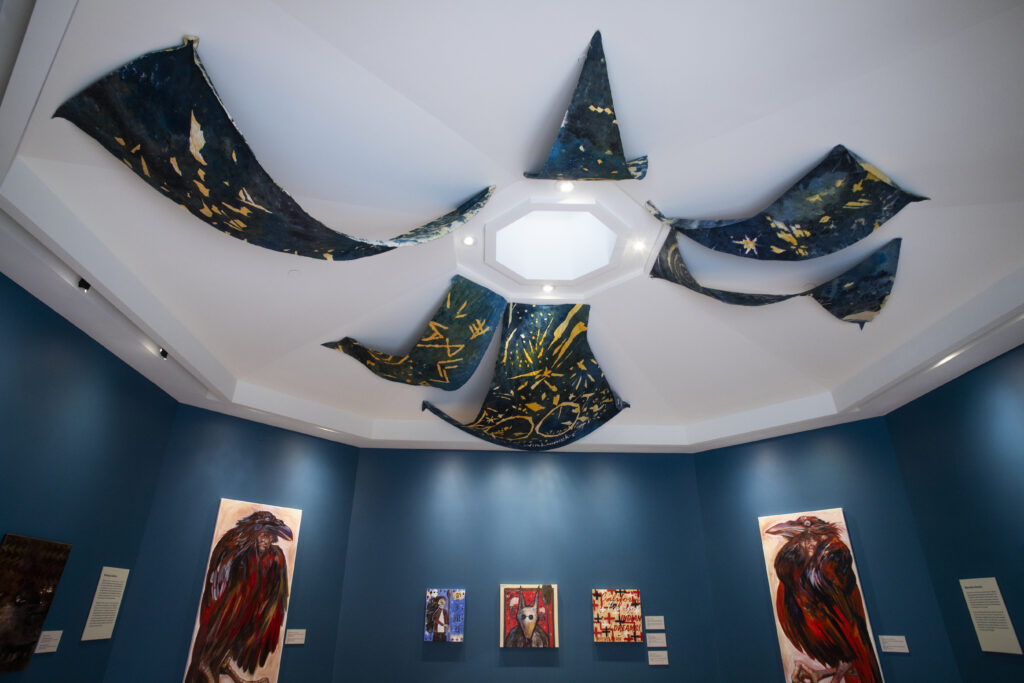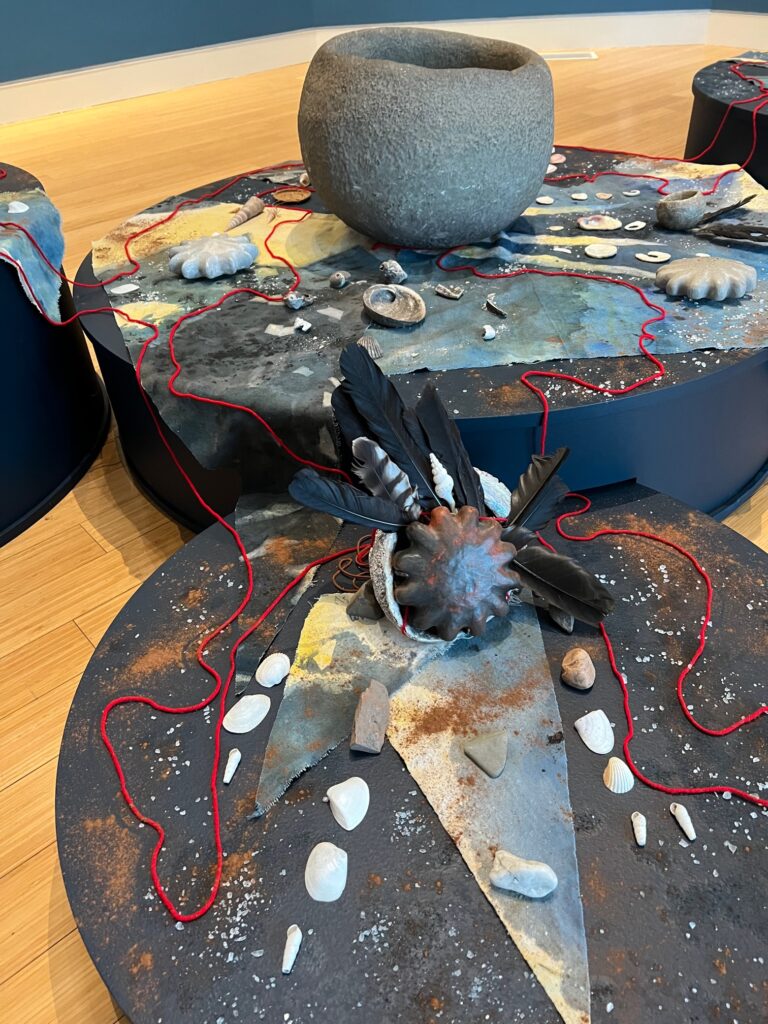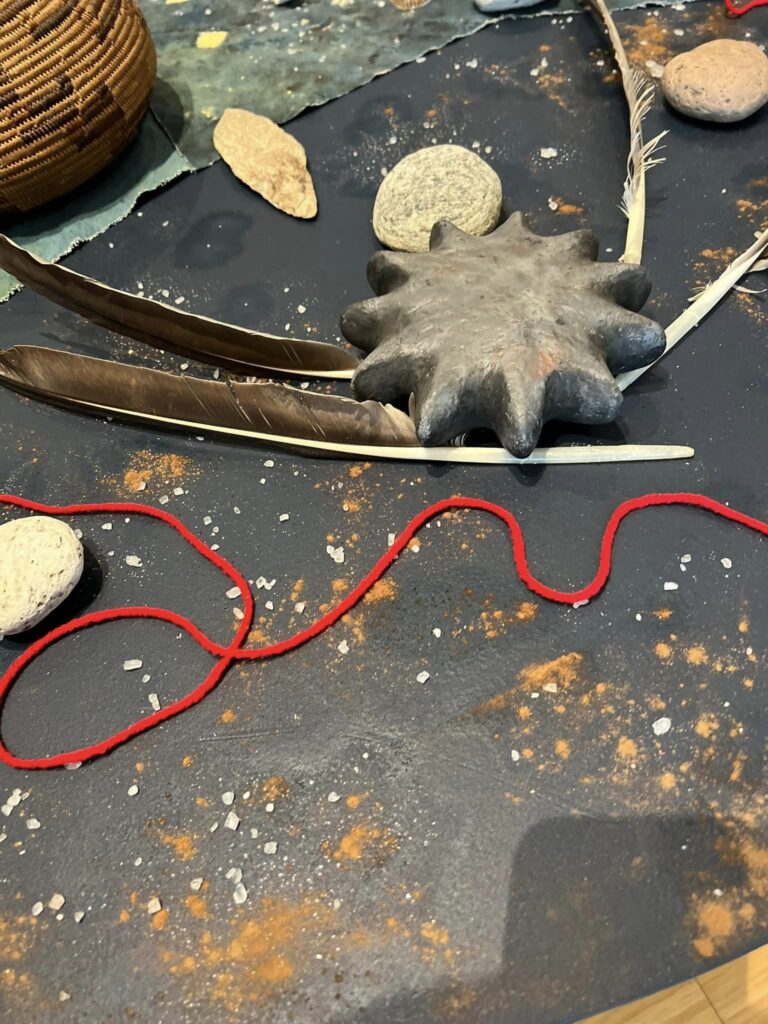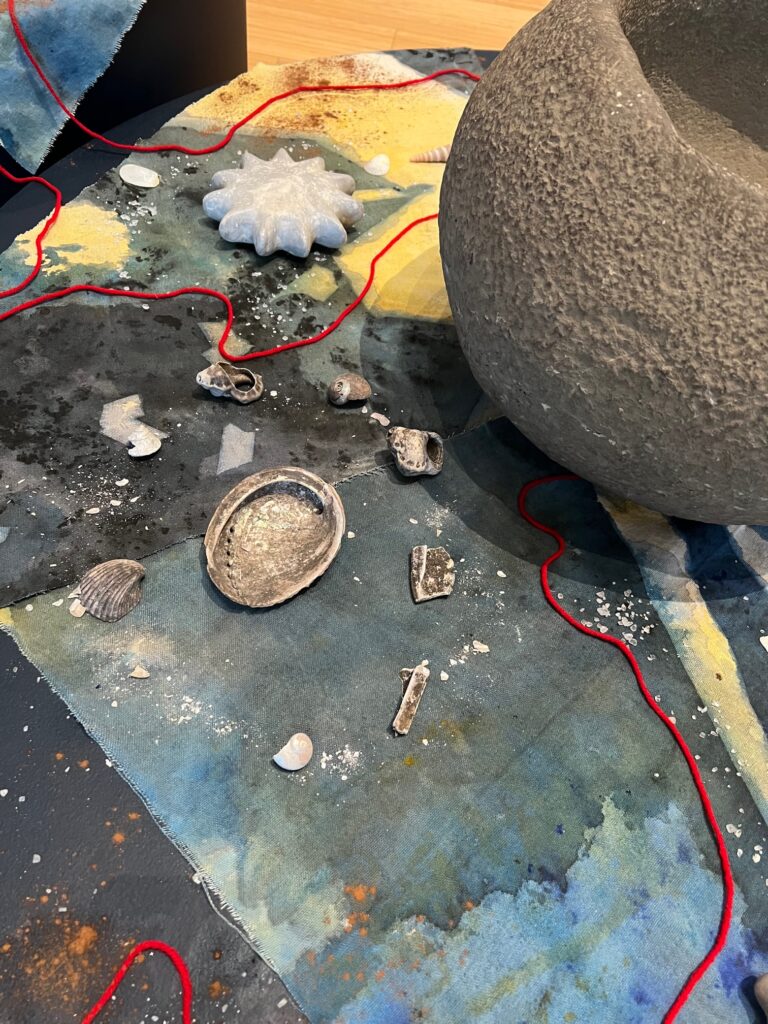Artist Gina Herrera has fought many battles in her life, having served a tour of duty in Iraq. But she transforms war into art, as she does with her three new sculptures on display in the exhibition Surviving the Long Wars.
While the triennial itself is just three days in March, the art exhibition will run March 4th to June 4th in the Chicago Cultural Center, Hyde Park Art Center, and the Newberry Library. Surviving the Long Wars focuses on the histories that shape our understanding of warfare as well as visions of peace, healing, and justice.
Herrera’s work here is a continuation of her signature sculptural line of metal and found materials. Drawn to using mixed media, she says “We have an abundance of discarded materials we throw away daily. I feel everything has some kind of history or message.” In her piece “The Liberty Master,” above, Herrera creates a beautiful metal work blossoming in vivid color, curling like a flower whose bud is shaped like a heart.
The message of the Chicago exhibition overall is to explore the alternatives to and repercussions from war, and Herrera’s work certainly fits that exploration. Kinetic energy fills every line of her metal work, as if the sculptures were captured and briefly frozen in mid-motion. They also express Herrera’s native ideology and beliefs, envisioned through her consistent art style and practice.
The Whimsical Diva, above
She welds her recycled materials into sinewy, almost hieroglyphic shapes, wrapping them fabric and discarded jewelry and buttons. She goes treasure hunting for society’s discards, transforming them into jubilant, lively creations that encompass a vast array of tossed-aside items, from lost property to plastic bubble wrap. “I look at everything as a possibility,” Herrera says. “We throw so much trash out, plastic stuff, which lands in the oceans, hurting the earth. It’s almost a sin to buy new things.”
Herrera describes found items as having character and energy, and adds that she is “partial to stuffed animals, [there’s a] living entity in them,” yet all the same they’re discarded. She gives used items the “opportunity to have a new life, continue the energy of the item.”
The artist feels that our discard of objects is like the way in which we discard people, and the lack of respect we have both for older, used items and our own elders. “Once you get to a certain age, you are useless, a burden to society.” This attitude discounts knowledge, including oracle language, and native culture, which is then forgotten, Herrera attests. “People don’t have a desire to look into their own history, [they] want to avoid history.”
As a Native American artist, she takes her current Native experience and uses that to make “commentary on the planet and future. We are still very contemporary, we are still fighting for the land, the soil, the earth.” Thematically, Herrera work with time, the past, present, and future, and a connection to the earth.
A Virtuous Warrior, above
For the three sculptures the artist is displaying at the Chicago exhibition, she wanted to make sculptures with mannequin parts, and found a mannequin for use at a flea market.
“I want my viewers to think about the sacrifices that the U.S. armed forces have endured to uphold democracy. Maybe I subconsciously decided to use a mannequin [to] represent the masses of veterans who returned back home without limbs,” Herrera says. She also wants viewers to consider how fortunate they are to live in a country where they’re not afraid of losing their lives. “Many people in this country take for granted all the privileges we have…. How can anyone who served this country want to overthrow democracy?” She notes, “We…uphold the values and sacrifices of their brothers and sisters before them. This is the reason why we stand at attention when we are raising and lowering the flag.”
Along with a strong belief in upholding these freedoms, Herrera seeks to present, through her art, a focus on Native American history and its role in the present, for contemporary artists. Her art presents the issue of discarding items, and infiltrating “our land, rivers, oceans, sea, forest, mountains, and air with our negligent behavior. We take and destroy our world but never give back with respect to all the gifts of Mother Earth.”
Herrera’s use of color and form is visceral, created through what she terms as a “very intuitive” process. “I do not pre-plan… I let the items or materials speak to me. As I am wrapping yarn, string, underwear, or fabric, I am conscious of my materials and do my best to use different patterns, textures, [and] materials so there is no repetition. I want each sculpture to look different from one another, to have their own identity and feeling,” she explains. “I go with the flow and make it a playtime – like when I was a child. I like to create voices, especially if I am using toys or stuffed animals, as I feel they still have a soul.”
Herrera’s sculptural approach is rooted in what she describes as “the aesthetics of the everyday.” Having served 25 years in the Armed Forces, she experienced, amid the devastation of combat, “the global impact of the systematic destruction of the planet…the long-term effects of conflict/war, including the exploitative, unsustainable, careless discarding of trash by the United States Military.”
These experiences led her to question her own artistic practices, and the desire to lessen her environmental impact. Beginning by photographing “the vastness of neglected detritus that could be seen for miles,” she soon extended her art practice to the creation of her 3- dimensional forms, using discarded objects and natural resources.
Serving both as a powerful response to the military industrial complex and the often-careless approach to the environment embedded in American life, Herrera infuses her work with the spiritual, the historic, and a uniquely bold vision. Her sculptures are both a call to action, to respect the past, and the gift of motion and mobility, while also offering a rich insight into the poignance and necessity of freedom and reinvention.
- Genie Davis; photos provided by the artist














